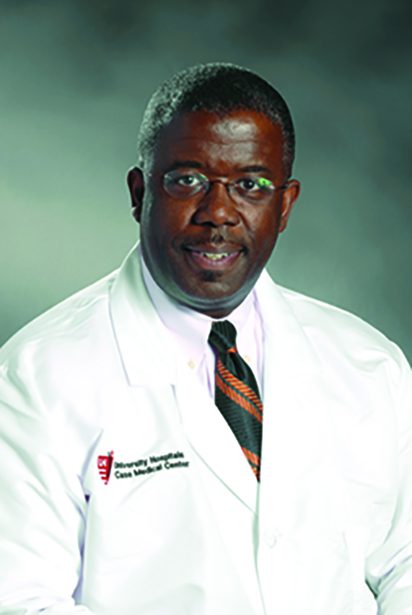No Place Like Home
June 01, 2017
 University Hospitals Rainbow Babies & Children'sExperts in Children's Health
University Hospitals Rainbow Babies & Children'sExperts in Children's Health

When Esther Krupenia was 31 weeks pregnant with her third child, an ultrasound showed that much of the baby’s esophagus – the tube connecting the mouth and stomach – was missing.
This condition, known as pure esophageal atresia, requires highly specialized care and complex surgery after birth to enable the baby to eat normally.
“This was obviously a shock for us,” recalls Esther’s husband, Rabbi Yehoshua Krupenia. “But we have a strong belief system. We believe God is the one who creates the world and creates the baby. And we believed He would help us through this.”
Immediately Rabbi Krupenia began researching where to go for the best care. It didn’t take long for the Cleveland-area couple to decide that the best choice was close to home.
“We chose to stay at UH Rainbow Babies & Children’s Hospital because of their surgical expertise and incredibly compassionate and caring team,” Rabbi Krupenia says. “Why would we go anywhere else when we had everything we needed right here?”
A complex condition to treat

Pure esophageal atresia is a rare condition, occurring in about one in every 30,000 to 40,000 births.
The best treatment is surgery to connect the two ends of the baby’s esophagus – but surgery for baby Krupenia would be especially difficult because the gap between the two segments of the esophagus was so long, says Edward Barksdale Jr., MD, Surgeon-in-Chief and Chief of Pediatric Surgery at UH Rainbow Babies & Children’s Hospital.
Surgery would need to be delayed for several months after the baby’s birth to allow the esophagus to grow before connecting it.
On multiple occasions in the days leading up to their baby’s birth, Rabbi Krupenia watched how the physicians and nurses interacted with each other. “They respected each other,” he says, “and everyone’s opinion, including ours, was solicited and was important.”
Rabbi Krupenia remembers the impression Dr. Barksdale made the first time he met him.
“As soon as he walked into the room, he had a certain sense of calm to him – big, warm eyes,” Rabbi Krupenia says. “He came over and shook my hand. He had just a warm grip and already started putting us at ease.”
A plan in place
Esther delivered baby Shaina by cesarean section, with a full team of adult and pediatric specialists on hand for any emergency. For the next three months, the nurses in the Quentin & Elisabeth Alexander Level IIIc Neonatal Intensive Care Unit and Level III Transitional Care Center provided round-the-clock care to ensure Shaina didn’t develop any complications.
“The nurses are some of the most unbelievable people you’ll ever meet,” Rabbi Krupenia says. “We forged personal connections with them and felt like we were part of a family, in which everyone worked together for the best possible outcome.”
Waiting was hard on the family, but they felt confident in the multidisciplinary team of UH specialists in obstetrics, maternal-fetal medicine, neonatology, pediatric otolaryngology, pediatric cardiology, pediatric surgery and pediatric anesthesia, and in the specially trained obstetrics and neonatal nurses. They were not disappointed.
Shaina, in turn, rewarded everyone’s patience with an incredible gift: Her esophagus grew.
“We were able to connect the two ends of her esophagus and avoid other approaches that are more aggressive and typically less successful long-term,” Dr. Barksdale says.
“Dr. Barksdale was one of the main reasons we chose to stay in the Cleveland area,” Rabbi Krupenia says. “He is highly experienced, extremely patient and thorough, and he treated us with such respect. He was personally involved in every aspect of the baby’s care. Throughout the whole process, he took such interest in our daughter and our family, and spent so much time with us.”
Growing strong
Home at last after four months in the hospital, Shaina is “doing amazing,” Rabbi Krupenia says. With the help of therapists, she is learning how to eat and grows stronger every day.
“She’s recovered beautifully and is doing great,” Rabbi Krupenia says. “She’s cute, she cries, she laughs, she plays – she acts just like a regular baby. God willing, she’ll have a healthy, happy life.”


